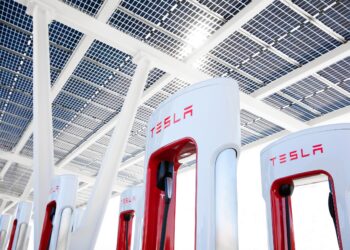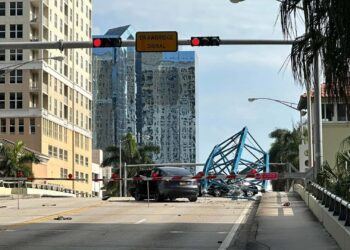Tesla has announced it will build a new Megafactory in Shanghai, China, where the massive Megapacks will be manufactured at a rate of up to 10,000 units per year.
This will be the second so-called Megafactory in Tesla’s portfolio, after the one that opened in 2022 in California, and will supplement the production from the company’s Nevada Gigafactory, where domestic Powerwalls are also made.
At first glance, the Shanghai facility seems to be a copy of the Lathrop, California factory, with a planned output of 10,000 Megapacks per year or 30 Gigawatt-hours, considering one Megapack is equipped with 3-Megawatt-hour batteries.
According to Electrek, Tesla plans to begin the construction of its Chinese Megafactory in the next quarter, with the aim of starting production as early as the second quarter of 2024. Additionally, the American EV maker will export Megapacks made in Shanghai worldwide, enabling Tesla to shrink the massive, two-year-long backlog of orders for its large-scale energy storage product.
With each unit containing 3 MWh of batteries, the Megapack is infinitely scalable and essentially acts like a massive battery generator that can be used to store energy for different scenarios. In conjunction with solar panels, it can allow its users to be independent of the grid by filling up the batteries during the day and depleting them overnight when the sun doesn’t shine. Additionally, the Megapacks can be replenished from the grid at night, when energy costs might be lower, and then power everything for daytime activities.
Megapacks have also been used by national or state electricity companies to fill the void left by decommissioning coal-powered stations, like in Hawaii, where a 565-MWh battery array charged by a 156-MW solar farm replaced coal power after 30 years.
Another 196-MW system was put in place in the UK in 2022, where it provides “critical balancing services” to the electricity grid network.
According to Tesla, each Megapack unit ships fully assembled and ready to operate, allowing for quick installation times and reduced complexity. They also require minimal maintenance and include up to a 20-year warranty.
The energy storage system has an inverter for each battery module and is connected to the Internet, which allows for over-the-air software updates, making it better over time with incremental tweaks and fixes.
As always, we’d like to know what your thoughts are on this, so head over to the comments section below and write away.









